
As I set up my makeshift studio in the Mines Advisory Group training base in Kurdistan, Iraq, I expected to photograph somber, conservative Yazidi women whose culture was shrouded in mystery and bizarre rumors. Instead, I found myself directing a TikTok-inspired pose from a Yazidi woman in full traditional dress, complete with ornate headwear and golden adornments – and Adidas sneakers peeking out from underneath.
Little did I know that this project, coinciding with the approaching 10th anniversary of the Yazidi genocide, would challenge every preconception I had.
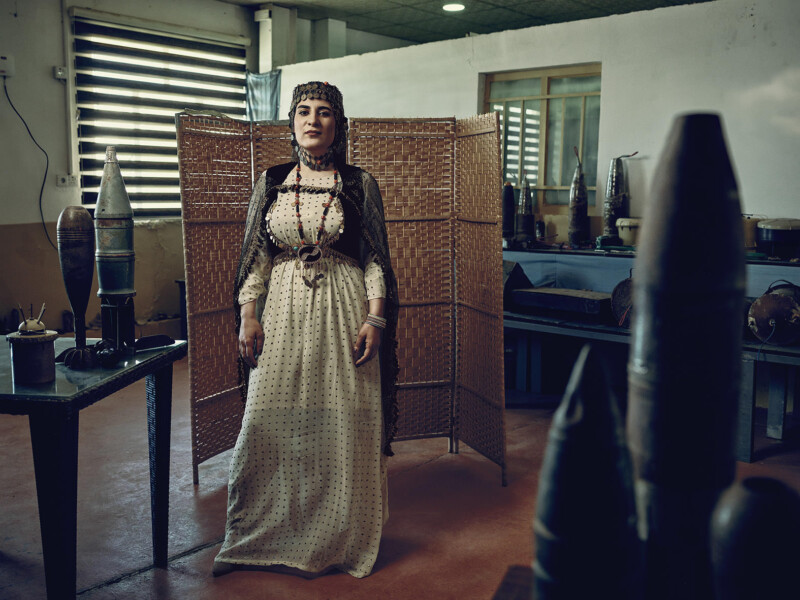
This surreal moment encapsulated the challenging and eye-opening experience of photographing women deminers in post-ISIS Iraq. As a portrait photographer, I’ve worked in various settings, but nothing compared to the complexities of capturing these women’s stories – a delicate balance of cultural heritage, modern aspirations, and the grim reality of their life-saving work.
My mission was clear: create a series of portraits of Yazidi, Kurdish, and Arab women who now clear the very landmines and IEDs that devastated their communities. But as I quickly learned, their stories – and my photographic approach – would be anything but straightforward.
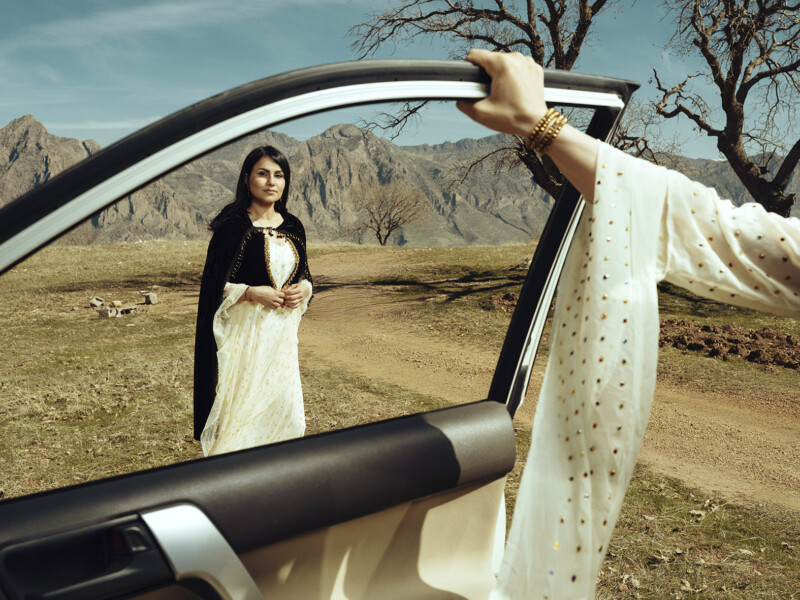
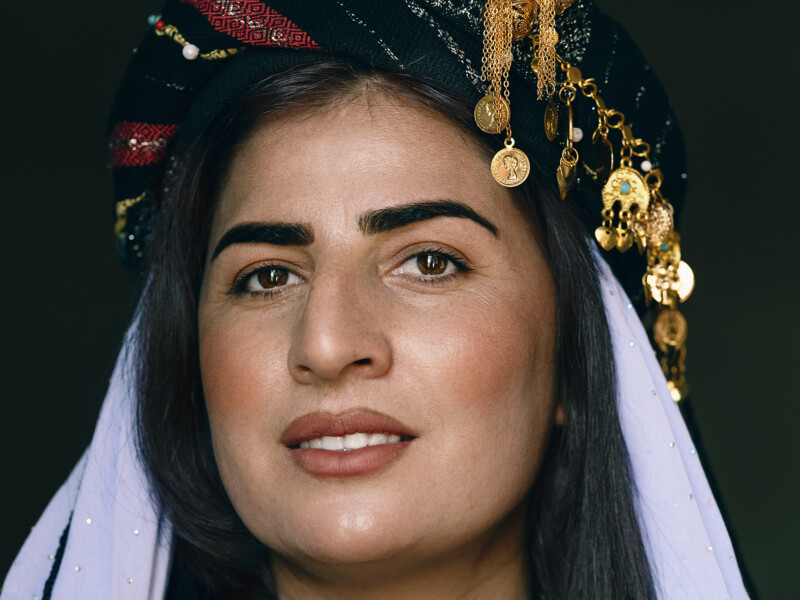
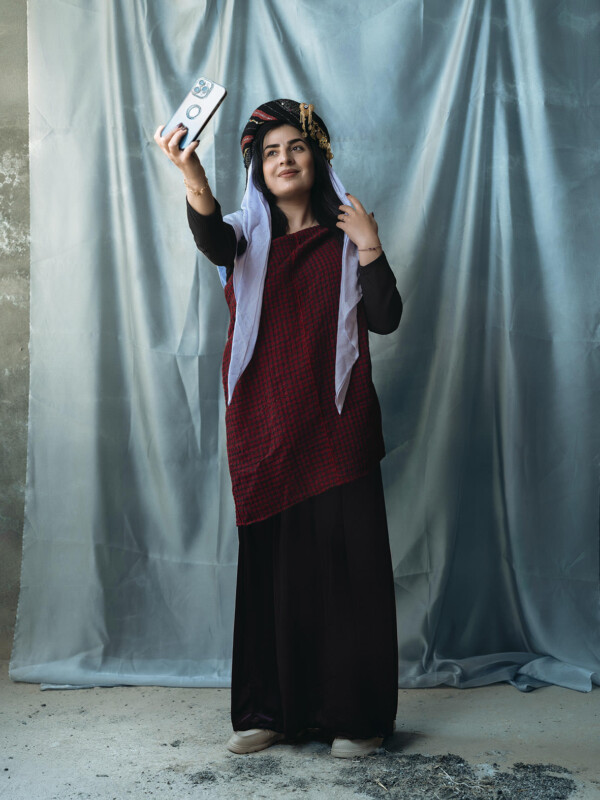
The journey began with a stark reminder of the region’s fragile peace. Staying near the American Consulate, we were jolted one morning by blaring sirens warning of a potential threat. As the radar on a nearby rooftop frantically scanned the sky, the consulate’s PA system ominously intoned “Target 4 o’clock.” Nothing came of the alarm, but it set the tone for our stay – a constant undercurrent of tension beneath the surface of daily life. That, coupled with my creative and life partner fainting on the bathroom floor from food poisoning the day before, made it clear we were in for quite an adventure.
This tension extended to my photographic process. How do you capture the essence of women some of whom have survived unimaginable horrors and now walk into minefields daily, all while respecting their cultural identity? The answer, I thought, lay in embracing contradictions and thinking on my feet.
Take Siham, a 24-year-old Arab woman from Mosul who recounted fleeing ISIS at 14, losing her husband to their brutality, and now working to rid her homeland of their deadly legacy. She arrived at the MAG training ground wearing a formal red business-like jacket – a stark contrast to the surroundings that resembled my grandmother’s garden in Lithuania. As I frantically searched for a way to make this work, my eyes landed on the canopy of olive trees. Suddenly, Annie Leibovitz’s portrait of Alice Waters came to mind – a chef standing with a peach against a backdrop of leaves. The olive branch, a symbol of peace, perfectly summarizes the struggle in Siham’s life. This kind of on-the-spot creative problem-solving raised my nerves and temperature, with no time to prep.
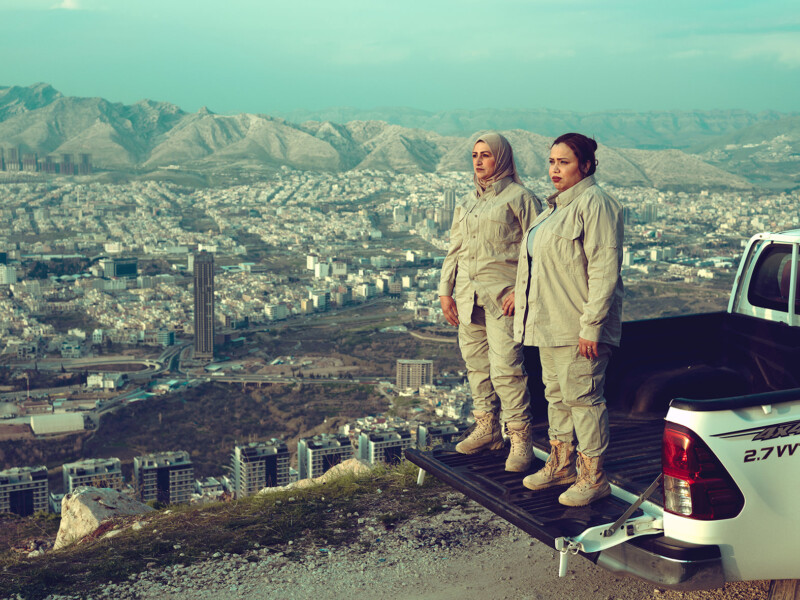
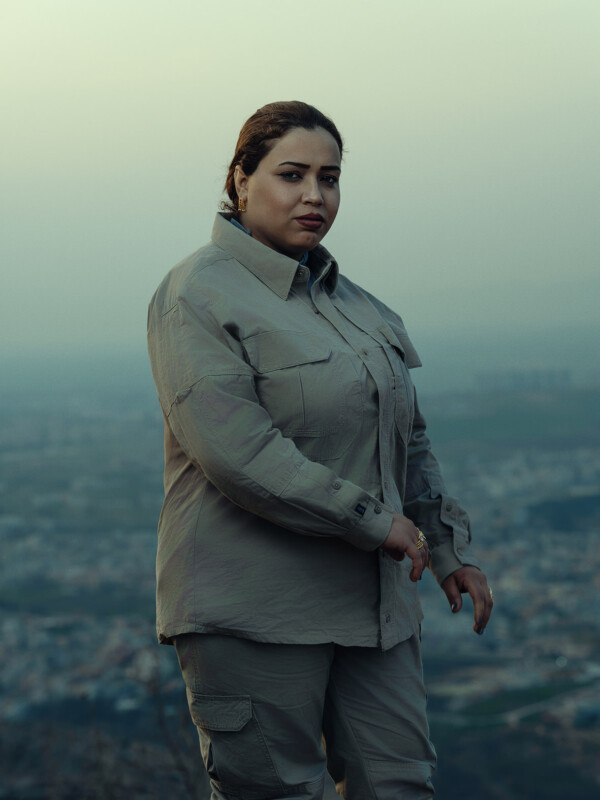
These technical challenges were quite complex. Working in and around a demining training facility meant improvising with limited space and resources. I found myself using everything from pink fabric backdrops hastily hung between trees to the natural landscape of Dokan’s rolling hills. Each setup required careful consideration – how to frame these women in a way that told the story I was there to capture while honoring both their cultural heritage and their crucial, dangerous work.
My gear choices were critical in these challenging environments. I relied heavily on my Fujifilm GFX 100s with 45mm, 63mm, and 110mm lenses, allowing me to capture both environmental portraits and closer, more intimate shots. I chose this system for its exceptional image quality and dynamic range, crucial for capturing the nuanced details in both the harsh sunlight and deep shadows of the Iraqi landscape. A Profoto B10x Plus light was my lighting choice because of its portability and power. At the same time, I opted for a Pixapro 105cm 16-sided rice bowl softbox because of its sturdy construction that I felt could withstand the unpredictable windy conditions.
The technical challenges were compounded by language barriers. While I had a translator, it’s not the same as being able to connect directly with your subject. I quickly learned that emotion and a heartfelt hug were languages we all understood, bridging gaps where words failed.
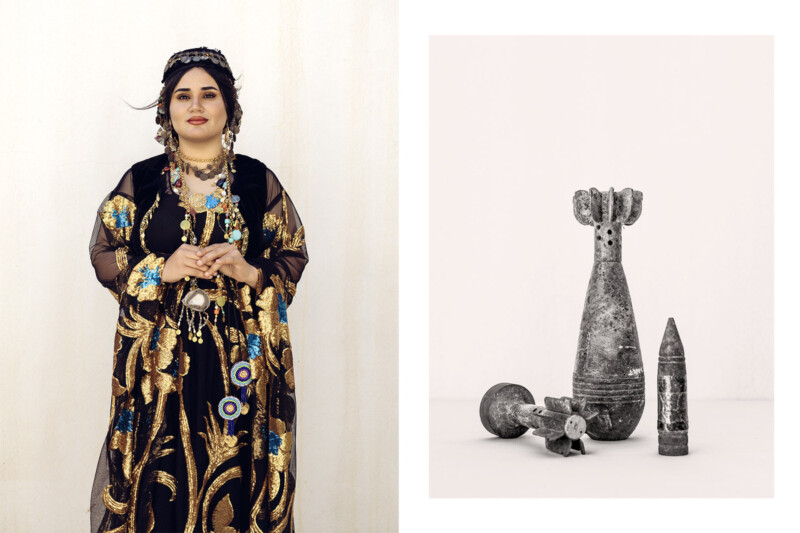
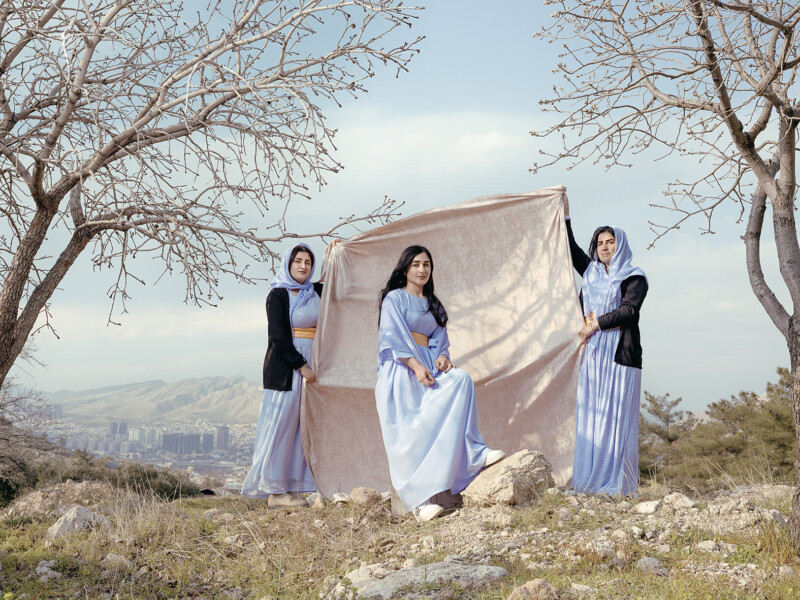
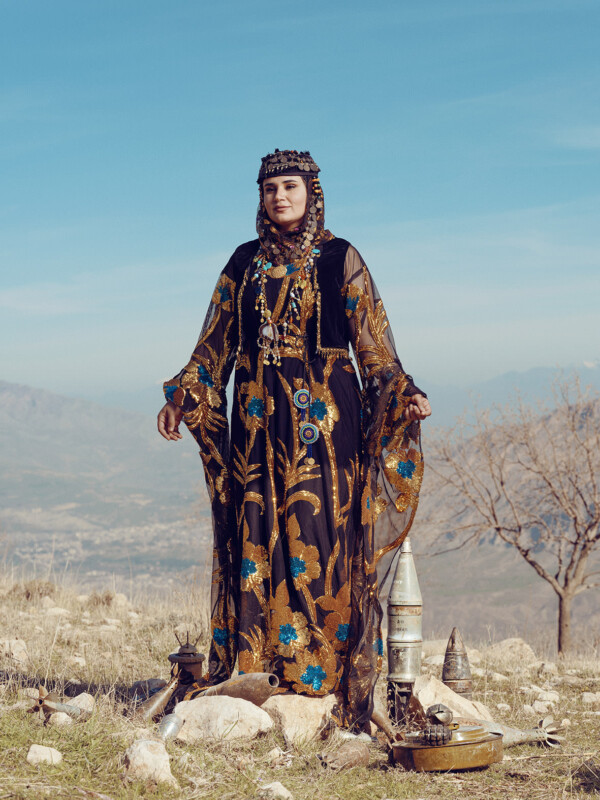
One particularly memorable moment came when photographing three Yazidi women against a pink backdrop suspended between trees. As I contorted myself into increasingly awkward positions to get the perfect angle, I ended up in what can only be described as a gynecological pose on the ground, legs spread wide. The sight proved too much for my models, who burst into laughter, looking at each other in disbelief. It was a humorous lesson in cultural sensibilities and a reminder of the unexpected moments that can bridge cultural divides.
The juxtaposition of culture, traditions, and modern realities became a central theme in my work. Avan, a 26-year-old Kurdish deminer with a background in electrical engineering, posed in her traditional dress with munitions at her feet and a backdrop of the Dokan landscape near the minefield where she worked. This stark contrast between her cultural identity and her life-saving work became a powerful visual metaphor for the complex realities these women navigate daily.
This contrast was never more apparent than when I photographed the Yazidi women in one of their homes earlier. Setting up a makeshift backdrop on a wall, I noticed how they wouldn’t let go of their phones, constantly snapping selfies – a striking juxtaposition with their traditional dresses and everything I thought I knew about their culture from media portrayals. When I mentioned TikTok, they instantly shifted into a completely different mode of posing, one that I eagerly captured on camera. It was a powerful reminder of the complexities of identity in our interconnected world.

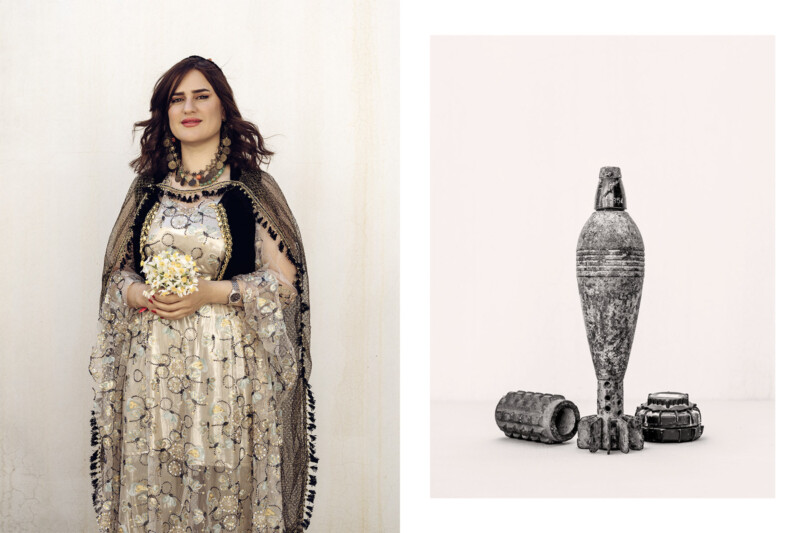
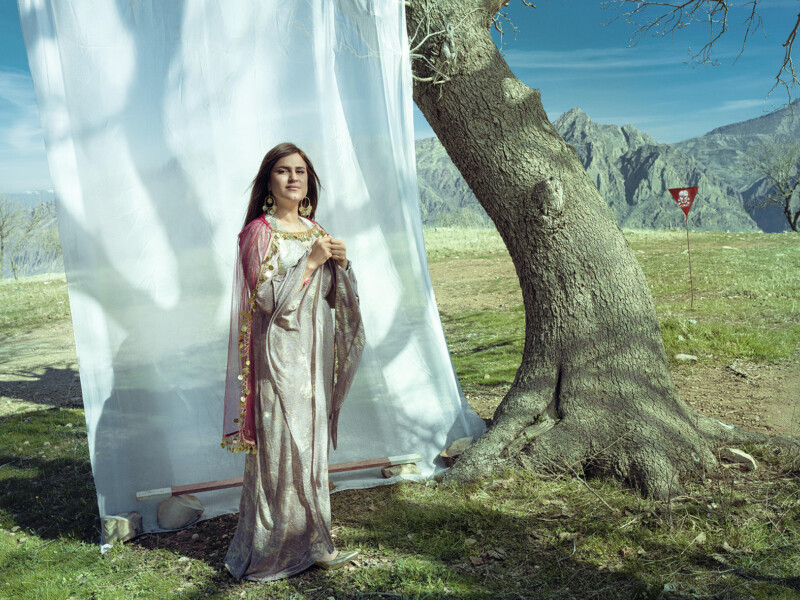
Perhaps the most challenging aspect of this project was doing justice to the women’s stories through my images. How do you visually represent the journey of someone like Rawa, who fled ISIS when they invaded Mosul? She saw bodies burning, and cars and houses destroyed. Her husband broke his back as they ran from ISIS, leaving her the breadwinner for her family of 6. ISIS’ oppression of women encouraged her to want to do well and gain new skills. At 45 now skilled in defusing explosives, she works as a deminer, making it safe for others to return.
Sometimes the answers I was looking for found me instead. After the photo shoot, Rawa came to me and asked for one more photo. I felt she wanted to show me something but I was not sure if she wanted to give something to me or to give something to herself. She took off her hijab because she wanted her hair to flow freely in the wind. I didn’t ask for it but I followed her lead. I sat her on a random stone covered in pink fabric from an earlier shoot. The moment was more important than the location, so I lifted my camera and took a shot. I hope I managed to capture what she wanted to show me.
As the project neared its end, I realized that my greatest challenge had become my greatest asset. The contradictions I encountered – tradition vs. modernity, trauma vs. resilience, danger vs. hope – had pushed me to create some of the most nuanced and meaningful portraits. This experience has shifted my approach to portrait photography, teaching me to look beyond surface-level assumptions and find the complex stories that lie beneath.
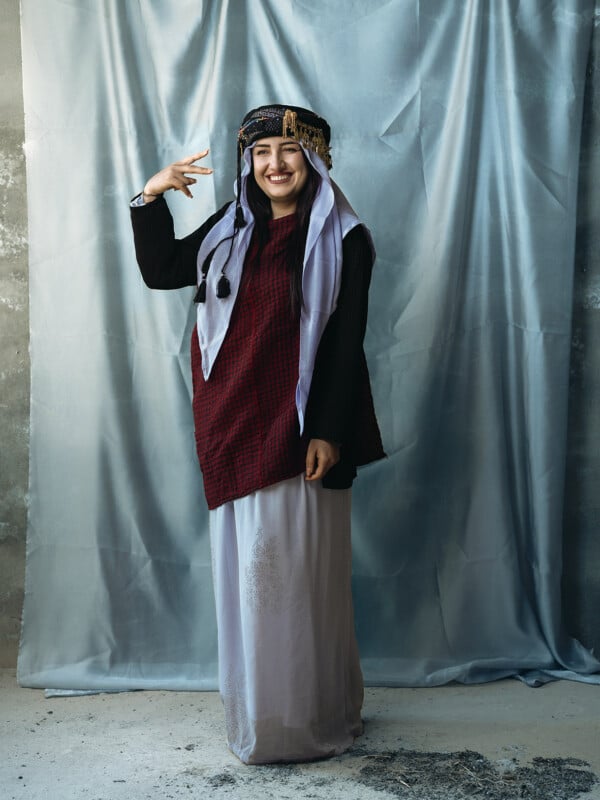
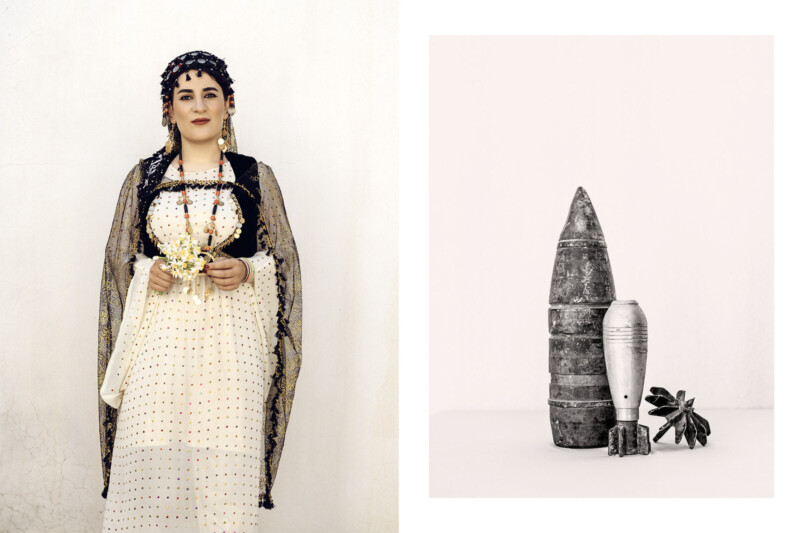
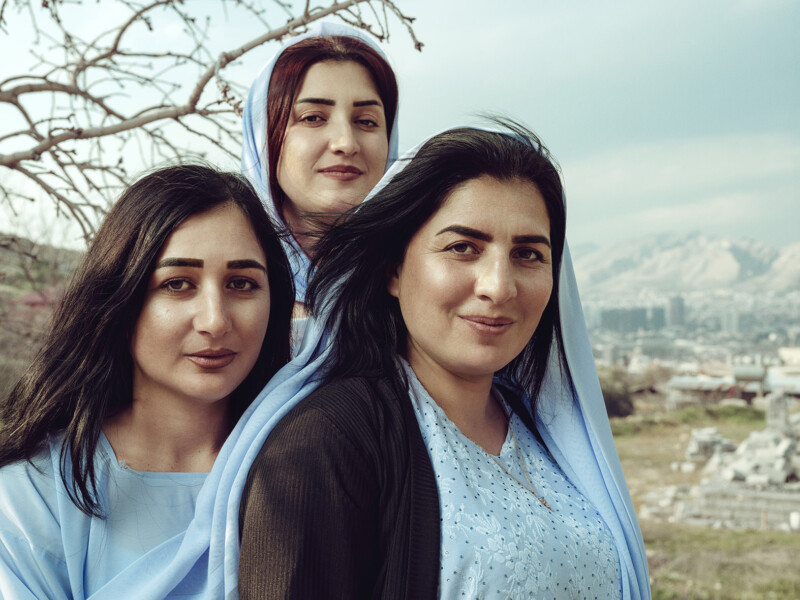
As I packed up my gear and said goodbye to the remarkable women I’d met, I was struck by a final irony. I had come to document their story, but in the process, they had changed mine. Through my lens, I had glimpsed a world far more complex and hopeful than I could have imagined – a testament to the power of photography to bridge cultures and challenge our understanding of the world.
For photographers considering similar projects, my advice is this: embrace the unexpected. Let your preconceptions be challenged. Be prepared to improvise, both technically and creatively. Most importantly, approach your subjects with an open mind and heart. The most powerful images often emerge when we allow ourselves to be surprised by the stories we encounter. And sometimes, the most profound moments come when you least expect them – like a TikTok pose in traditional Yazidi dress, reminding us that in every portrait, there’s a story waiting to be told that goes far beyond what meets the eye.
About the author: Sane Seven is an award-winning portrait/ad photography duo who works internationally on commissions that range from fashion legend Jimmy Choo to heads of state like Australian Prime Minister Julia Gillard. The duo is a regular contributor at The Sunday Times with an interest in future technologies. In 2020, Sane Seven used a remotely controlled robot to create a social campaign for The Women in Data in the UK. In 2021, Sane Seven received Gold in New York Photography Awards and an equivalent accolade in London Photography Awards in 2022. You can find more of Sane’s work on Instagram.
